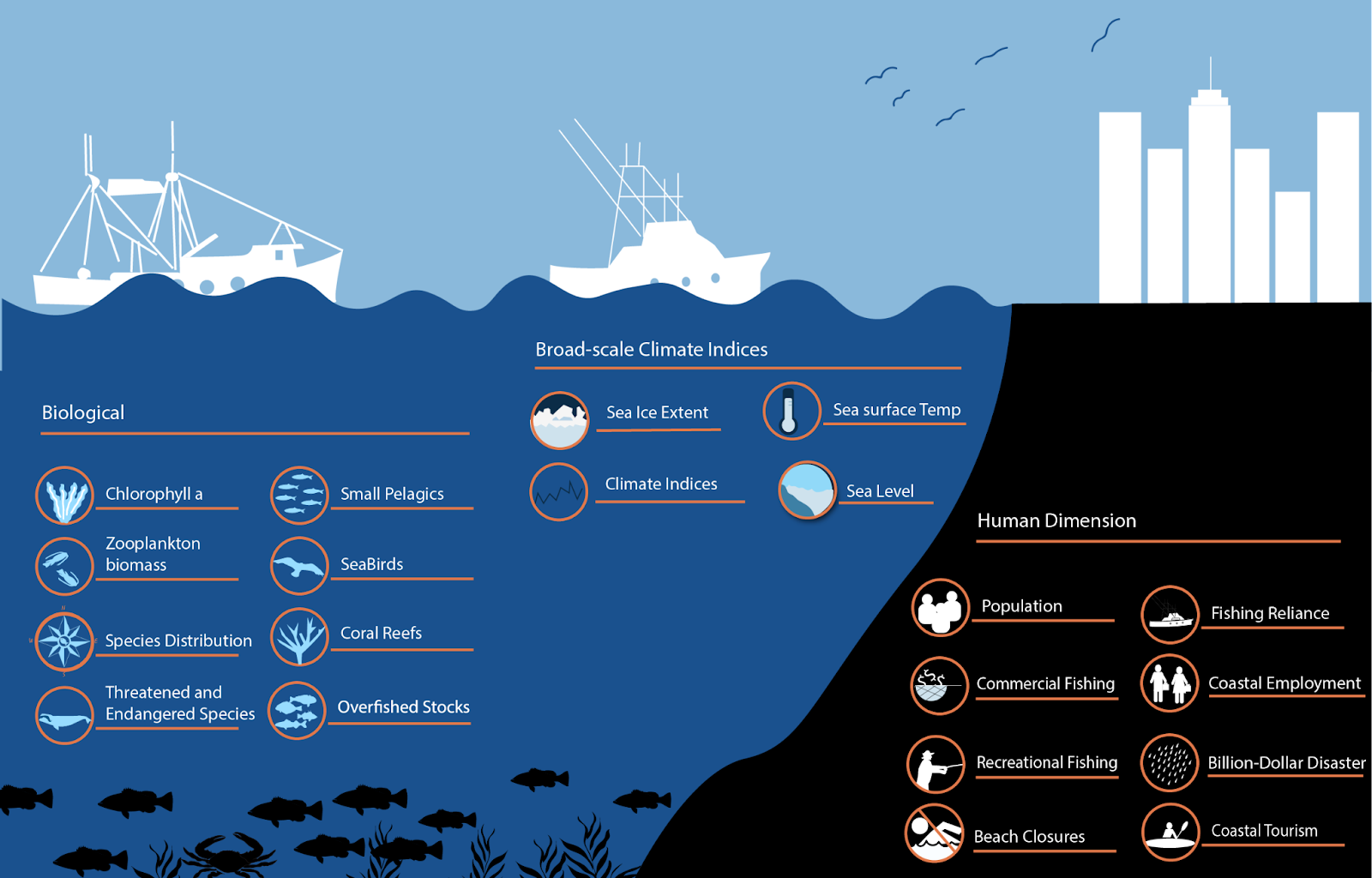NOAA has announced a re-launch of its National Marine Ecosystem Status website, a tool that provides easy access to NOAA’s wide range of important coastal and marine ecosystem data. The website provides a starting point for educators, outreach specialists, and the interested public to explore the status of seven major U.S. marine ecosystems and the nation. The re-launch of the site features updated indicator data, new regional coverage for some existing indicators, and a completely new Marine Species Distribution indicator.

A One-Stop-Shop for Marine Ecosystem Indicator Data
Marine ecosystems — the organisms, physical environment, and their interactions in a specific area — provide food, jobs, security, well-being, and other services to tens of millions of people in hundreds of thousands of ocean-dependent businesses across the United States. As the nation’s earth science agency, NOAA monitors and analyzes the widest range of essential U.S. coastal and marine ecosystem data. Until last year, it was difficult to find all this information online in one place. This website is a tool that consolidates NOAA and agency partner data. This data is presented in a way that is easy to understand and use for members of the public and scientists alike.
This website presents the status and trends of key climatological, physical-chemical, biological, and human needs and activities data. The data is organized by region and theme, and can also be viewed on a national level. Some examples include coastal populations and recreational fishing engagement. As a result, educators, outreach specialists, and the public can easily access regionally-specific data related to the indicator of their choice. They can also find easy-to-understand summaries and links to the raw data and to additional resources. The time series figures include symbols and gauges that describe how recent values of an indicator compare against the overall series. The website also represents an opportunity to feature the diversity of important work done across NOAA.
New Data, New Indicator Information, and Increased Clarity
The re-launch of the website represents the first major update since its introduction almost exactly a year prior. The new website features:
- Updated data for existing indicators
- Reformatted interpretation language associated with all indicators
- New “Ecosystem-Based Science” information tab
- Additional resource links to encourage users to explore the data further on other NOAA websites
- New Marine Species Distribution Indicator
- Newly expanded Coastal Tourism Economy and Corals Indicators
Marine Species Distribution Indicator
The new Marine Species Distribution Indicator tracks changes in the geographic locations where a species is found both latitudinally and in the water column. Some species naturally move from location to location throughout the year, following seasons, food, or other factors. However, as climate change causes ocean waters to warm, populations of many species are moving. Some are moving towards the poles (northward in the northern hemisphere) or deeper towards cooler waters, allowing them to track their preferred temperature. Understanding where and how fast marine species are moving is important to coastal communities. These changing distributions can affect the species available for fishing, recreation, and cultural practices.
The corals indicator is drawn from NOAA’s National Coral Reef Monitoring Program. It now includes sub-scores for important components of coral reef ecosystems:
- Benthic
- Climate
- Fish
- Human Connections
This increased level of detail allows users to access more information about specific aspects of coral health.
Coastal Tourism Economy
The Coastal Tourism Indicator now includes measures of employment and wage compensation alongside the original GDP measurement. All three indicators represent important components of the human dimension of our coastal and ocean ecosystems in the United States.
Explore the newly updated National Marine Ecosystem Status website and let us know what you think by emailing us at NMFS.EIWG@noaa.gov. If you have an indicator that you would like to propose for addition to the site in future updates, please review our Indicator selection criteria and use the form at the bottom to submit your proposal.
